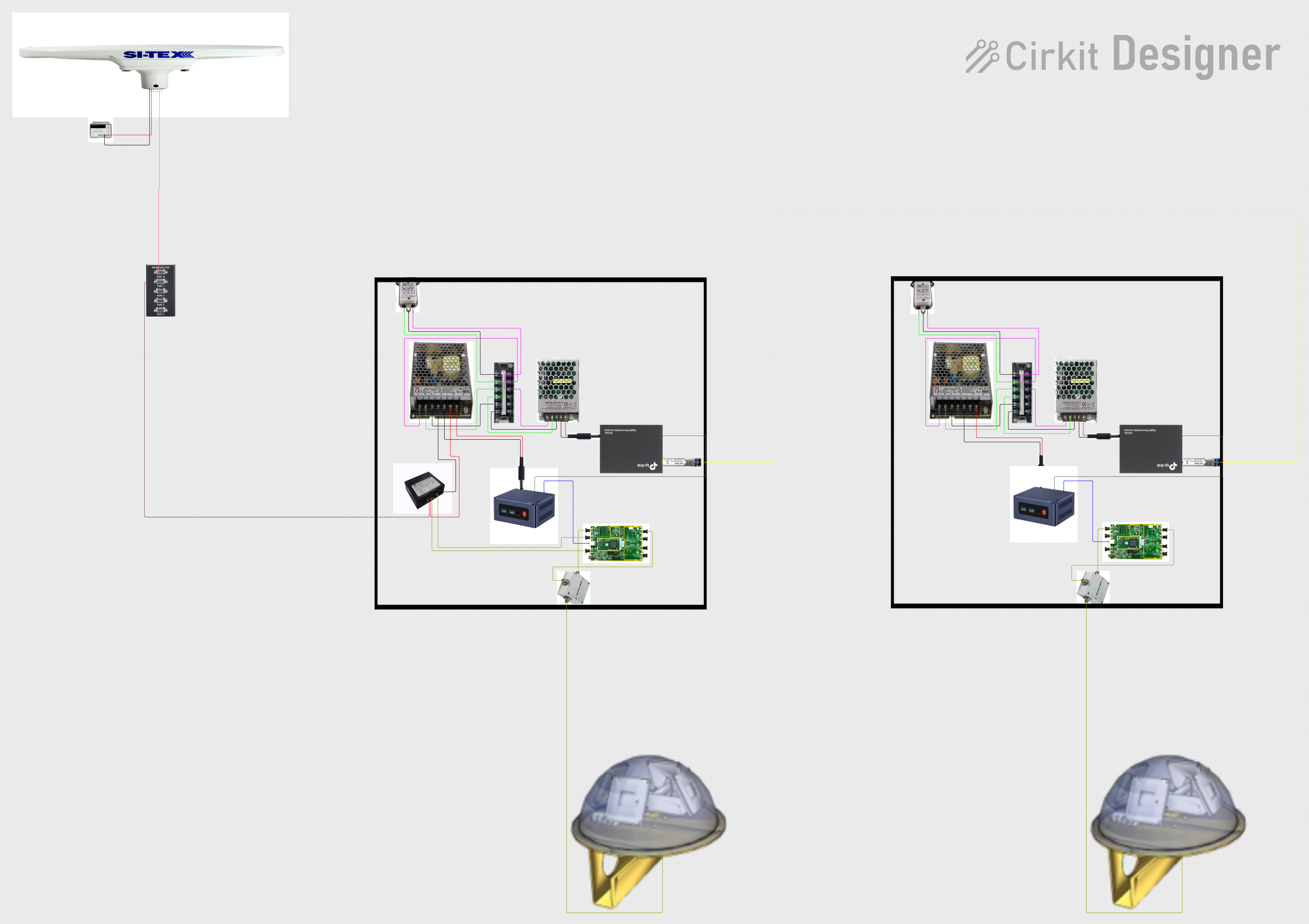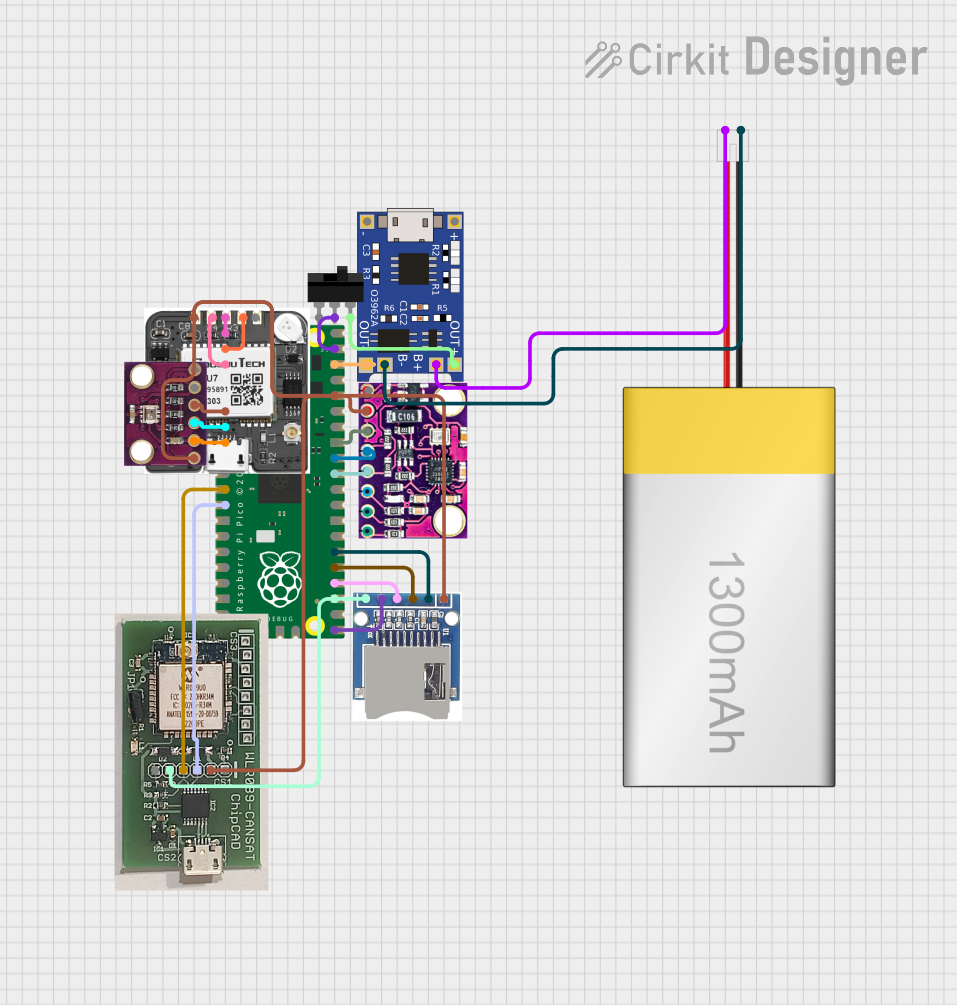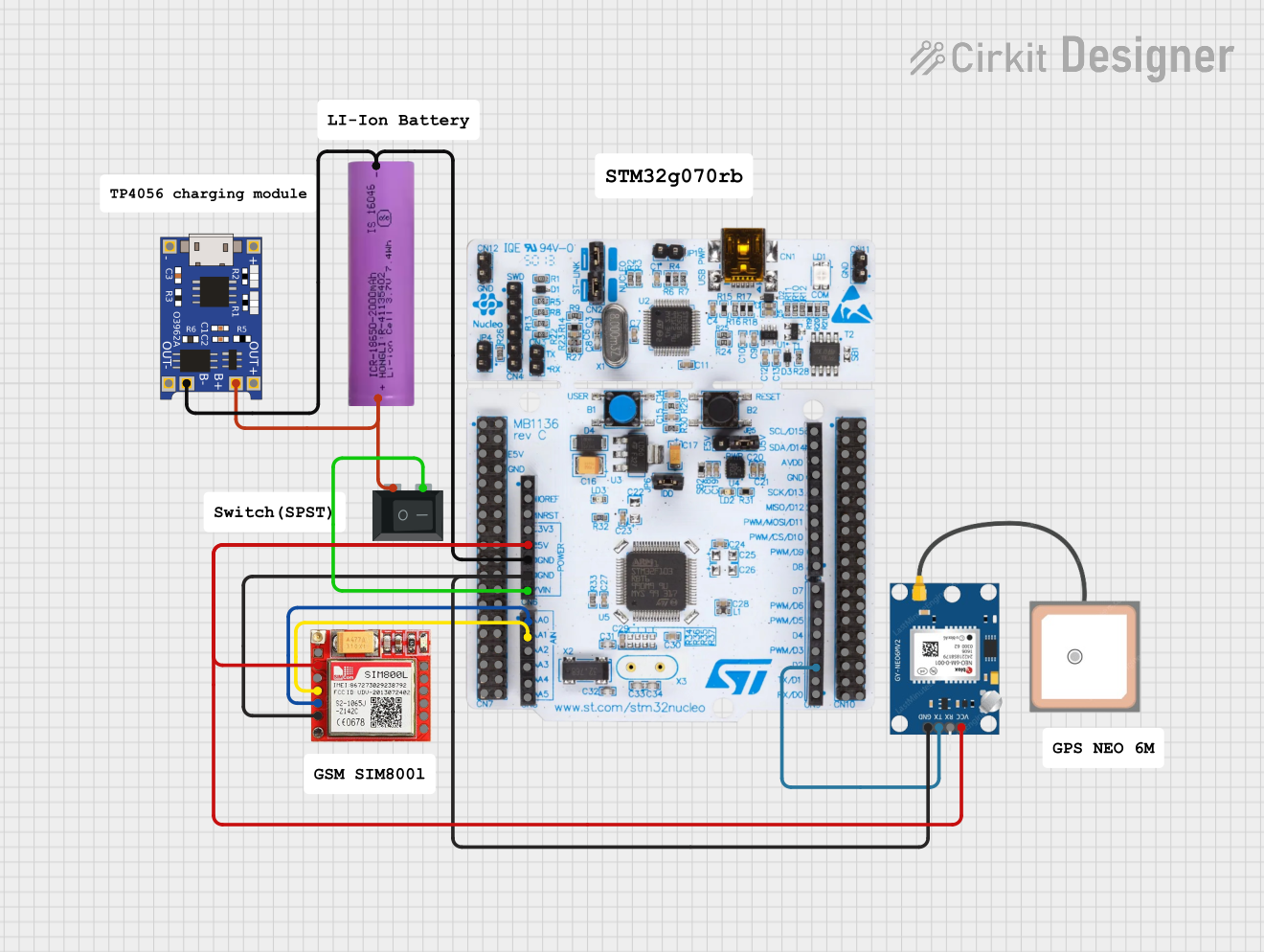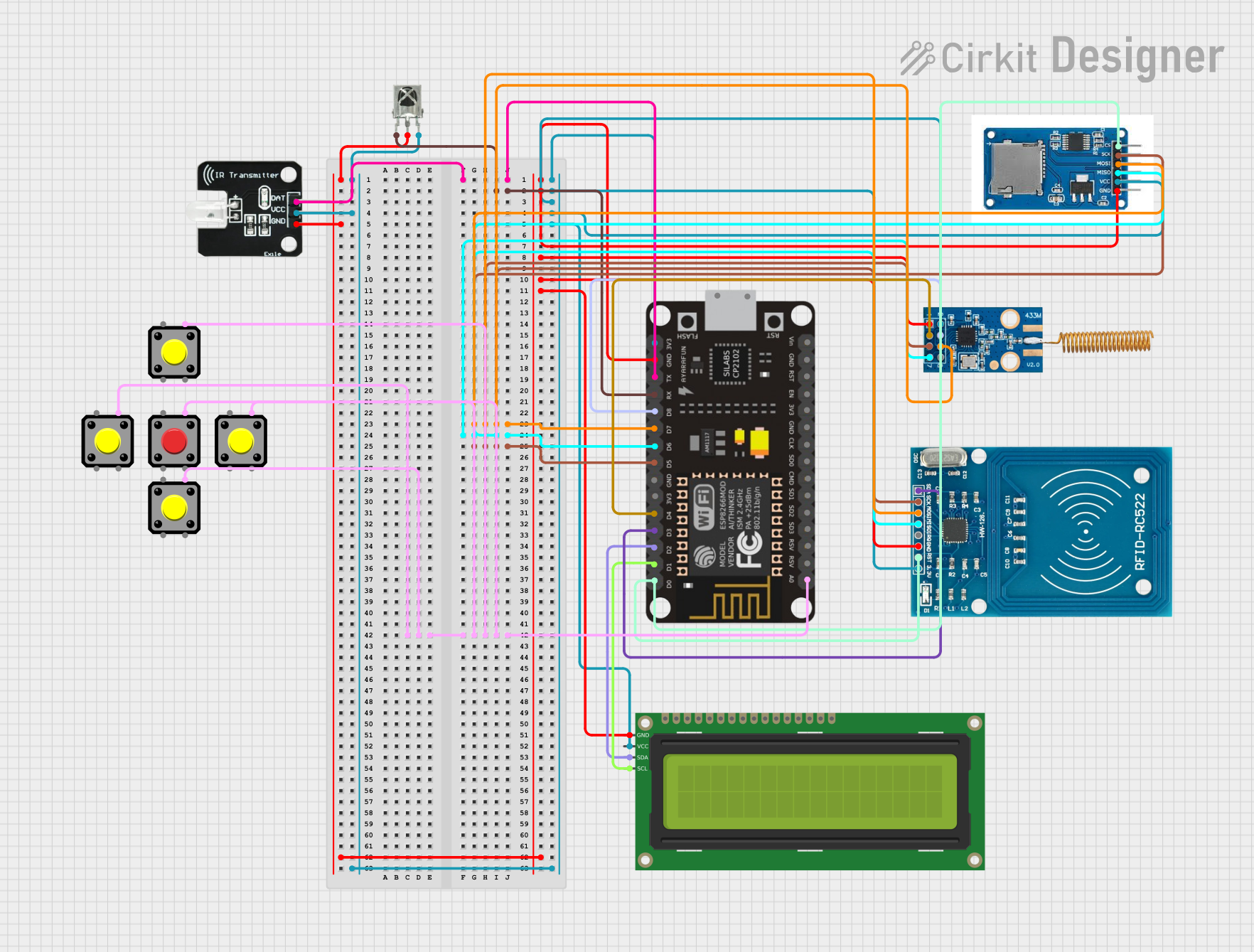
How to Use CC1101: Examples, Pinouts, and Specs

 Design with CC1101 in Cirkit Designer
Design with CC1101 in Cirkit DesignerIntroduction
The CC1101 is a versatile, low-power RF transceiver designed for use in the ISM (Industrial, Scientific, and Medical) and SRD (Short Range Device) frequency bands. It supports various modulation formats and has a flexible data rate, making it suitable for a wide range of applications. Common applications include remote controls, home automation, wireless sensor networks, and security systems.
Explore Projects Built with CC1101

 Open Project in Cirkit Designer
Open Project in Cirkit Designer
 Open Project in Cirkit Designer
Open Project in Cirkit Designer
 Open Project in Cirkit Designer
Open Project in Cirkit Designer
 Open Project in Cirkit Designer
Open Project in Cirkit DesignerExplore Projects Built with CC1101

 Open Project in Cirkit Designer
Open Project in Cirkit Designer
 Open Project in Cirkit Designer
Open Project in Cirkit Designer
 Open Project in Cirkit Designer
Open Project in Cirkit Designer
 Open Project in Cirkit Designer
Open Project in Cirkit DesignerTechnical Specifications
Key Technical Details
- Frequency Bands: 300-348 MHz, 387-464 MHz, and 779-928 MHz
- Modulation: FSK, GFSK, ASK/OOK, 4-FSK, MSK, and OOK
- Data Rate: Programmable from 0.6 to 600 kbps
- Supply Voltage: 1.8-3.6V
- Current Consumption: 15.6 mA in RX, 33 mA in TX (at +10 dBm)
- Sensitivity: -116 dBm at 1.2 kbps
- Output Power: Up to +12 dBm
- Operating Temperature Range: -40°C to +85°C
Pin Configuration and Descriptions
| Pin Number | Name | Description |
|---|---|---|
| 1 | VDD | Power supply voltage |
| 2 | SI | Serial data input |
| 3 | SO | Serial data output |
| 4 | CSn | Chip select (active low) |
| 5 | SCLK | Serial clock input |
| 6 | GDO2 | General digital output 2 |
| 7 | GDO0 | General digital output 0 |
| 8 | GND | Ground |
Usage Instructions
Integration into a Circuit
To use the CC1101 in a circuit, connect the VDD pin to a power supply within the specified voltage range and the GND pin to the system ground. The SI, SO, CSn, and SCLK pins are used for SPI communication with a microcontroller, such as an Arduino UNO. The GDO0 and GDO2 pins can be configured to provide various status signals and outputs.
Best Practices
- Ensure that the power supply is clean and within the specified voltage range.
- Use decoupling capacitors close to the VDD pin to filter out noise.
- Keep the antenna path as clear as possible from other metal objects.
- Follow the recommended PCB layout guidelines provided in the CC1101 datasheet.
Example Code for Arduino UNO
#include <SPI.h>
// Define the CC1101 pin connections to the Arduino
const int CS_PIN = 10;
const int GDO0 = 2; // Can be configured in the CC1101
void setup() {
// Initialize the SPI interface
SPI.begin();
pinMode(CS_PIN, OUTPUT);
digitalWrite(CS_PIN, HIGH); // Ensure CS is inactive (HIGH)
pinMode(GDO0, INPUT); // Configure GDO0 as input if used
}
void loop() {
// Example code to send a simple "Hello" message
sendMessage("Hello");
delay(1000);
}
void sendMessage(const char *message) {
selectCC1101(); // Select the CC1101 transceiver
// Write your code to configure and send the message
// ...
deselectCC1101(); // Deselect the CC1101 transceiver
}
void selectCC1101() {
digitalWrite(CS_PIN, LOW); // Activate the CS pin
SPI.beginTransaction(SPISettings(1000000, MSBFIRST, SPI_MODE0));
}
void deselectCC1101() {
SPI.endTransaction();
digitalWrite(CS_PIN, HIGH); // Deactivate the CS pin
}
Troubleshooting and FAQs
Common Issues
- No communication: Ensure that the SPI connections are correct and that the correct voltage is applied.
- Poor range: Check the antenna design and placement. Ensure there are no obstructions or interference.
- Intermittent operation: Verify power supply stability and use decoupling capacitors.
FAQs
Q: Can the CC1101 be used for Wi-Fi or Bluetooth applications? A: No, the CC1101 is not designed for Wi-Fi or Bluetooth. It operates on different frequencies and protocols.
Q: What is the maximum range of the CC1101? A: The range depends on many factors, including output power, data rate, and environmental conditions. With optimal settings and conditions, it can reach several hundred meters.
Q: How do I configure the CC1101 for my specific application? A: Configuration is done through the SPI interface. Refer to the CC1101 datasheet for detailed register settings and configuration options.
Q: Is the CC1101 compatible with Arduino? A: Yes, the CC1101 can be interfaced with an Arduino using the SPI library, as shown in the example code.
For more detailed troubleshooting, refer to the CC1101 datasheet and user guide.